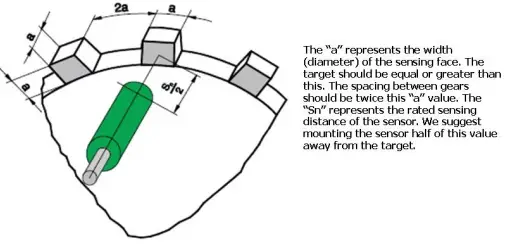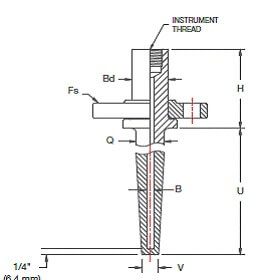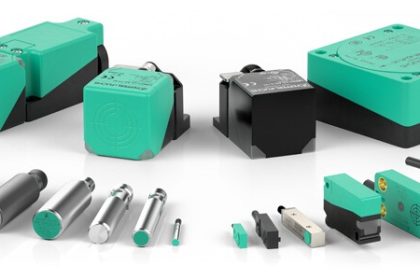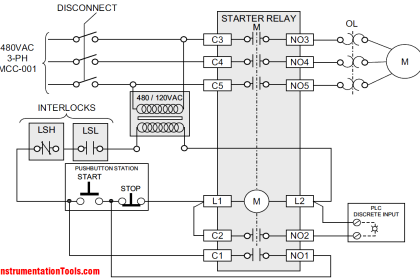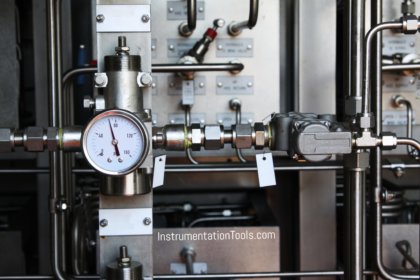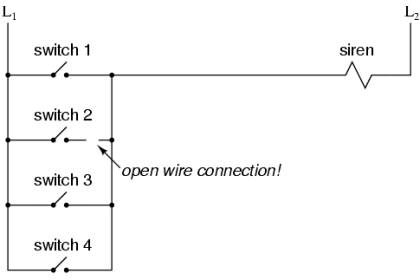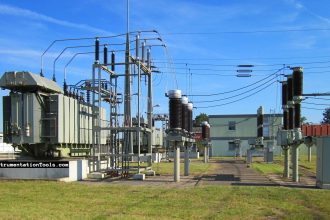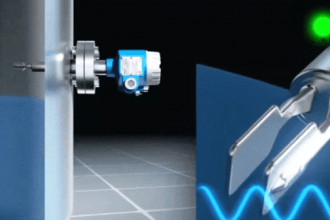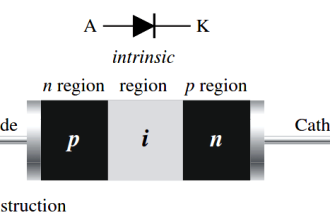Hundreds of different proximity sensors are available for use in automation applications. There are several points to consider when you look for a sensor, as your choices could affect your application later down the road. Let’s take a look at why you would use an inductive or a capacitive sensor.
Inductive sensors
An inductive sensor is used to detect the presence of metals (such as steel, stainless steel, aluminum, or copper). An important factor to note is that our sensors have a different nominal sensing range depending on the material. The standard target is a mild steel plate that is 1 mm thick with square dimensions the size of the sensor.
Inductive sensors has a rated operating distance of 4 mm, but will pick up aluminum only at about 1.6 mm because of the 0.4 reduction factor for aluminum.
If a longer sensing range is needed, we also have reduction factor 1 sensors that do not have a reduction factor for steel , stainless steel, copper, and aluminum.
The common cylindrical inductives that we offer are 8 mm, 12 mm, 18 mm, and 30 mm. We do offer some smaller diameters as well such as 4 mm, 5 mm, and 6.5 mm models. Typically, a smaller diameter sensor has a higher switching frequency (number of times the sensors can change output states). This is an important feature to consider if the sensor will be used for a speed monitoring application involving a fast, rotating target. You can see an example in the image below.
The environment in which the sensor is located in plays a role as well. Most of our inductive proximity sensors have an IP67 degree of protection. An IP67 rating means that the sensor can resist the ingress of dust and water such that the sensor stays sealed even if submerged in stagnant, low-depth water for short periods of time. If the sensor has to be used underwater continuously, it requires an IP68 degree of protection. For high-pressure washdown, an IP69K degree of protection is needed. These ratings are listed on the specification sheet.
Capacitive sensors
Capacitive sensors are capable of detecting plastic, wood, and other raw materials including metal. An inductive sensor can detect only metal. A common application is the detection of liquids, plastics, and grains. Capacitive liquid detection is used for level and presence detection.
Often times, this type of application involves sensing through a tube or tank to detect the liquid. Capacitive sensors have either a fixed sensitivity or an adjustable sensitivity. Depending on the material of the tube or sidewall, a capacitive can be selected to mount on the exterior of the tank/ tube and detect the fluid through the wall.
Factors would be the dielectric constant of the fluid and the material of the side wall. Tables with the dielectric constants of most materials can be found on the internet, or a brief list can be found in sensor catalog.
One typical application involves using a thin tube with a small capacitive wire tied to it to give an output when the fluid reaches the wire. This method of sensing can be useful in hydraulic cylinder applications.
Another popular solution utilizes our plastic sensor well that is drilled and fitted to the side of a tank. A cylindrical capacitive sensor can then be placed in this sensor well and used for level detection. This approach makes adjusting the sensitivity and removal of the sensor easy. Most cylindrical models have a potentiometer on the back for adjusting the sensitivity. Aside from the sensitivity adjustment and the ability to detect nonmetal targets, a capacitive sensor is similar to an inductive in most other aspects when considering housing size and range.
Also Read: How to Select an Actuator for Valve

